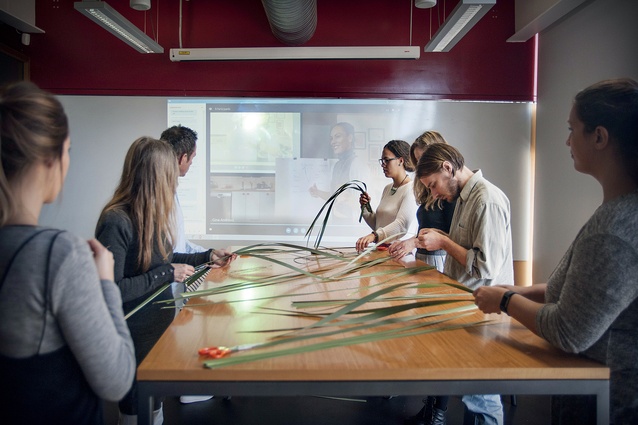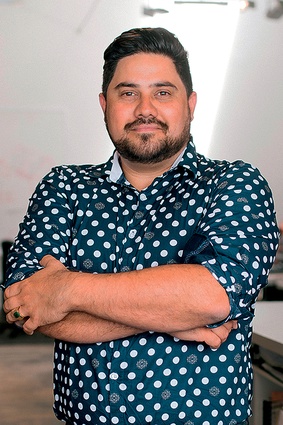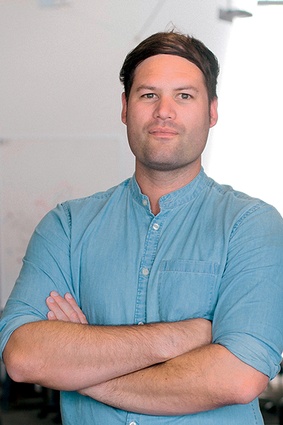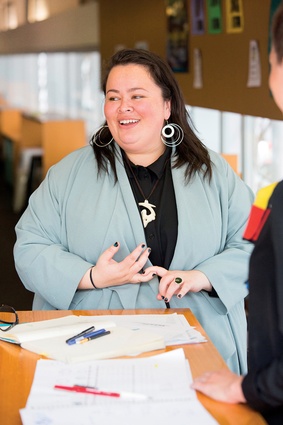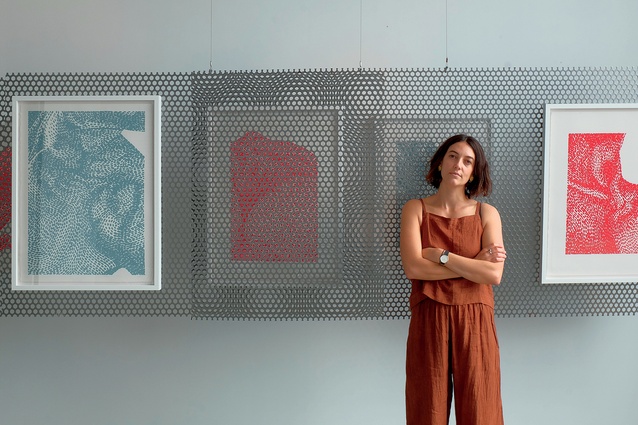Diversity in architecture: part two
Hear from four young practitioners about their experiences working as minorities in the architecture industry. Read part one, where Justine Harvey and Camille Khouri explore what a more diverse industry might look like, here.
A state of flux
Nick Dalton and Te Ari Prendergast from TOA Architects discuss what it’s like to be one of a few Māori-led practices working in Aotearoa’s architectural scene.
Justine Harvey (JH): What do you think of the practices now creating Māori groups?
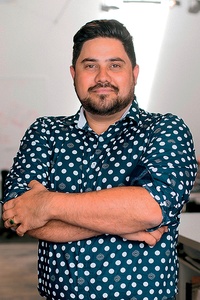
Te Ari Prendergast (TAP): There seems to be a lot of positioning going on with a number of companies and it’s not necessarily genuine; it’s kind of like the cool thing. Even the well-intentioned doesn’t translate into every project. Where it seems convenient, it’s pushed but, with another developer, they might just drop it off. The unique thing about TOA is (tikanga Māori) goes across every project. It doesn’t matter who the client is – it’s usually why they’re here.
Nicholas Dalton (ND): At a recent pitch to an international mainstream client, (our colleague) Nathan Stowell (Ngāti Awa) stood up and said our core difference is tikanga Māori. He rocked it: “This is what we do so if you don’t like it and feel uncomfortable, we’re not really your guys.”
We’re in this cultural state of flux right now and that is quite uncomfortable for some people, but others are excited by the energy this tension creates. We are seeing clients of all ages and cultures coming to us specifically because they want ‘epic’ Māori design.
JH: If you think back 50 years ago, it would have been a very different scenario.
TAP: It actually helps for people to access their own identity through Māori culture. With the Christchurch rebuild, we were inserting Māori sayings and waiata but, on every second page, was an early settler’s poem. It was just fundamental to how we think. Whakapapa is everyone’s whakapapa. We bring everyone’s stories in. Everyone should be able to access their own stories and history in a comfortable way.
Deidre Brown and I ran a design paper through the University of Auckland around using the pōwhiri process as a design tool, like architecture as an experience. Everyone said they wanted to learn about ‘Māori stuff’ and it’s like, hang on, you can’t learn about our culture until you understand your own.
A big part of it was uncovering their own identity and their own lens with which they’re looking at Māori culture. Everyone did their pepeha [introducing their identity and heritage], which started out in Māori, then switched into Korean or Chinese or Malayan. So, we had this real diversity in the class but it was through that interacting with Māori that they could be themselves more.
It was a completely different kind of course – everyone turned up for every tutorial, everyone stayed, sat around and felt comfortable to talk and contributed to each other’s work. It was all about sharing and working together, which is fundamental to Māori culture. We had our own pōwhiri on the marae, students could do their own mihimihi, and we even had a haka and a waiata. I said, “You guys are going to be better architects because of this; you are going to feel more comfortable working with Māori, and they’re going to gravitate instantly towards you.”
ND: And they’ll build better buildings. Some of the work was phenomenal for third-year students – that makes me smile.
TAP: Their presentations would be a poem about the experience of a building. They were poets and amazing architects as well. It gave them freedom to be themselves and to explore.
JH: What’s it like to work in a firm that completely honours tikanga Māori?
TAP: I think first and foremost for me, I don’t have to ask for permission to be Māori. It’s fundamental. Every day we turn up and we are ourselves completely and that’s why we feel we can have these tough conversations and really test our own designs. Because, as Māori, we’ve never really had that opportunity, actually, to test our own ideas with ourselves.
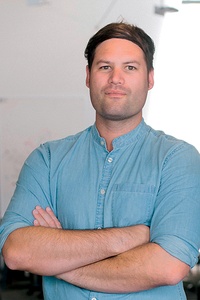
JH: How do Māori clients respond?
TAP: We say to Māori clients – we can begin on day one. We already know who Rangi and Papa are. You can save a couple of weeks in your budget because we can just start drawing.
ND: The challenge for us in the next five to ten years is building at scale. With the international practices and owners, our biggest buildings are their smallest.
JH: It would be really interesting to see large-scale buildings designed from a Māori perspective in our landscape.
ND: I don’t believe there’s anything else stronger to draw on from this country than Te Ao Māori. Rewi Thompson’s submission (with Ian Athfield and Frank Gehry) for Te Papa (Museum of New Zealand Te Papa Tongarewa) would have been awesome if it had been built. Rewi was not afraid of scale, at all. One of his first projects out of university was to redesign Auckland.
TAP: Bill Royal was a great modernist architect but he devoted all of his time to helping Māori and he built 150 marae.
JH: It must be amazing to now develop your ideas as Māori, to totally be yourselves.
ND: It’s beautiful but it’s also challenging. We are creating these things in our minds or from a different place, quite sub-consciously. Sometimes there is a bit of tension but we’ve got a good way of working through that now.
Here right now
Elisapeta Heta is a founding member of Jasmax’s Māori Cultural Advisory Group, Waka Maia, a team of designers which facilitates engagement with mana whenua groups on built-environment projects.
JH: Where do you think we are right now, in terms of diversity?
Elisapeta Heta (EH): The stage we’re at is just the acknowledgement of the complexity of everything. For people who want to sympathise but don’t know how, they’re overwhelmed by the conversation. I feel that, generally, architects are in the profession for good reasons. Most people aren’t malicious; it’s just that there’s an axis to the conversation that they don’t quite know how to bridge.
So, it’s really common that, if I speak about it, people come up to me and say, “Oh, I’ve never had someone explain that to me before”. Actually, “I’ve always wanted to do te Reo classes” is a classic one. I really appreciate that they don’t know what to do or where to go, so the burden often comes back to those in positions of minority to be the educators, the change-makers and the bridge-builders.
JH: Where would you like everybody to be?
EH: I think it would be useful if the majority were more aware of their biases in all instances; I think this is fundamentally asking for a lot more awareness and more empathy. I think asking for te Reo to be made compulsory in New Zealand is bordering on a ridiculous conversation now. It should just happen. And you’re seeing it now with te Reo classes getting so full; they have enormous waiting lists. Those are really simple acts of enabling access to other world views. People think they’re just learning the pronunciation but they’re gaining a full insight into a way of being.
JH: You’re probably one of the few Māori architects working in one of the bigger practices. That could be both a blessing and a burden. How do you negotiate that?
EH: Design language – the way architects speak – is quite confronting. Equally, mana whenua has a history; te Reo is a communal language. I try to translate between the two and talk to our teams about how there’s not the ‘one size fits all’ Māori. I think there’s a growing understanding that Te Ao Māori isn’t one dimensional. The dialects spoken in the North differ from those spoken in Auckland, in the Waikato and in the South Island.
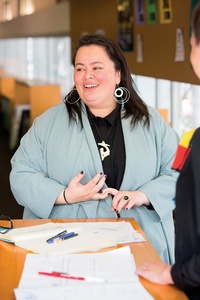
Each understanding of the history of Māui or the story of Rangi and Papa is different – and I don’t know all of those kōrero. I can’t be asked to speak on behalf of all Māori. I think that’s one massive difficulty we have with so few of us in the profession. Having to play multiple roles is having to be the voice for many. We have this unique combination of whakapapa, as well as our training, that is quite specialist and it means we have a unique perspective. But it’s not a perfect science.
JH: You must have had conversations with, say, Rewi Thompson and Rau Hoskins, I wonder what it was like for them, with so few Māori architects at the time, compared with today.
EH: Yes, some conversations but I wish there were more with Rewi, and others. Rewi came through at the same time as Tere Insley (from Kauri Architects), who’s much quieter. She was the first Māori woman to be registered and she’s about to become the first Reo Māori-speaking NZRAB assessor.
But, I wonder what it was like for the likes of Rewi, to have held the position he did, to have been in the public eye and professionally sought after – without many other visible Māori practitioners around. I find it quite overwhelming sometimes because I’m constantly concerned about the kind of respect that I have to bring to the conversations I’m having. But at least we can divide that conversation up between half a dozen of us.
JH: I wonder if, back then, there wasn’t much of a conversation.
EH: That’s true. I was catching up with a friend, Linda Kennedy, who is indigenous to Australia. She runs her own practice, Future Black, south of Sydney. We were commenting about this position you end up in – of being the ‘angry black woman’ or ‘angry brown woman’ in the room. And I was laughing because it’s often not about being angry; it’s literally just that you’re in the room and, when you say something that happens to be part of your perspective and it differs so much, it’s seen as rebellious or aggressive.
It’s tough because you have to pick your battles on the day. Do you really want to speak the truth and point out the glaring hole in somebody’s discussion, or do you want to retain your energy and accept that it’s another person who’s kind of missed the point? It’s really hard to know. But I think, truly, the position of what privilege or colonisation looks like is not having to make those negotiations constantly.
JH: But if they don’t challenge themselves, then they deny themselves the ability to evolve.
EH: That’s very true. I’ve been asked a couple of times in work situations if I’m allowed to speak in meetings with Māori because I’m a woman and, literally, the confusion and the overlay of the Western notions of patriarchy is so present. I have been asked if it was an issue to hire a Māori woman to do a really senior role.
From a Te Ao Māori perspective, to acknowledge Mana Māori, is for a balance of mana wāhine and mana tāne to be present – always. There’s a misconception that because men speak on the marae they’re more important. But, actually, they are positioned in front of the women, which makes them less important because they’re effectively more ‘dispensable’ in a way – because wahine bare life.
If words, which are incredibly powerful, are thrown as weapons on the taumata (the speaker’s bench), they hit the men first, so you are not damaging your potential for future generations. What’s important to understand is the first words you hear on the marae ātea is, actually, the karanga. The power of the whaikōrero there to negotiate and dispute and discuss, but the karanga and the waiata bring us together, they literally bind us, all generations. This is the hugely important role of women.
Shaking prejudices
Raukura Turei is the project architect of a large-scale commercial project in Auckland for Monk Mackenzie. Here, she talks about education and the role of the property developer in tackling prejudices.
JH: The issue of racial diversity needs to be talked about more.
Raukura Turei (RT): Totally. It comes down to privilege and access. When I was at university, we were half women and that was fantastic. But, from the Māori/Pacific perspective, there were two or three of us in that year so that’s where the representation really needs support. It comes down to the grades required to get in and that filters right back to what kind of support you are getting at high school or in the home. Then there are the cost of university, your ability to maintain a job and support your family while achieving the grades and, then, finishing one of the more gruelling degrees.
JH: Also, the school system, for the most part, is a Western model of education.
RT: Totally. The Western model says: “You come to university and solely put your mind to study, because everything behind you is supporting you to do that.” But that’s not a Māori/Pacific model. You’re part of a much bigger unit that requires you to juggle many different things and, then, the content being taught is Western: it’s mainly European and American influences to the history of architecture.
It is only recently, with fantastic tutors coming through (I can speak for the University of Auckland), that we’re introducing papers that have Māori and Pacific content. But when I was there, my fifth year was the first chance I had to direct thesis study into an area of interest within a Māori context. Is there relevance to the history of the architecture of New Zealand if we’re only importing our ideas?
JH: What is the role of the property developer in all this? It seems like public clients are changing and we have more iwi clients, often with a strong representation of women, which is interesting and exciting.
RT: Absolutely. It speaks to, evidently, the type of work being procured and, if the type of work speaks to either a community or a not-for-profit interest, that’s when you see more women coming through. When I was working at Stevens Lawson Architects, the Iona College project and Ellen Melville Hall were particularly female-led architectural projects. The project manager for the Ngāti Whātua Ōrākei Kāinga Tuatahi project was, again, a woman. So, you’re seeing strong representation, where the gains are more than the individual. But, on a commercial project, I’m yet to see a female property developer.
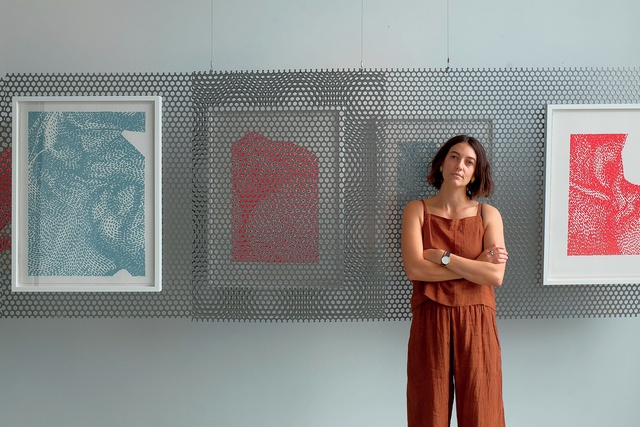
JH: What about in your current role?
RT: This is a really interesting time because, at Monk Mackenzie, I’m far more involved in the commercial sector, which is a new environment for me and an exciting chance to lead a large-scale project. So, generally, at any table of consultants, I’m the only woman and the only Māori. It’s been interesting learning who’s at those tables. Typically, it’s the stereotypical white males coming at a project – all with the same world view.
So, I can’t help thinking, “Well, I have to be the one in the room to shake prejudices: not just about women in the work environment but about how our country is treated, that it should not just be from a colonial gaze”. That’s the one I’m constantly having to shake, and find I’m pushed back, and then shake again. That’s outside of the scope of my role as project architect. It’s just going, “Guys, you’re all thinking through one lens, and I don’t agree with that lens.” So I have to keep asking questions.
JH: Some people have probably never been asked those questions before but I hope they reply, “Oh, I’ve never thought about that before.”
RT: Generally, yes, but I have seen when it’s not a priority in business to address tikanga Māori or our obligations under the Treaty, so that requires constant pushing: “Is there a consultation in place? Would you only go about it from that angle?” Those are the gaps that are so evidently missing in the commercial sector. Currently, I’m learning how much I can flex. It’s a fine balance representing your company and upholding the integrity of your role as the architect, while knowing that there are processes I’m seeing that really need to be shaken up when you’ve grown up with only a colonial lens.”
JH: I wonder if some are afraid of looking into the history of a site and engaging with iwi.
RT: Well, it’s often seen as the hard route. It’s the: “Oh, we might have to go through a long pōwhiri process, and that sounds like time and money.” But it’s building sound and enriching relationships within a project. It means that everyone feels acknowledged, even if that’s in really small parts. It’s scratching the surface of what our Treaty obligations should be, really.
JH: From a Western perspective, people can think, “Oh yeah, we’re here. This is our place now.” But we’re here because a lot of bad shit happened – and we have to heal those situations and you do that through dialogue.
RT: A model that I saw early on in my career gave me hope. I was working at Cheshire Architects on Q Theatre and I was part of Te Rōpū Reo Whakahaere. Essentially, it was a Māori consultant ropu (group) of iwi representatives from Ngāti Whātua, as well as performers and artists. I’m Ngāi Tai ki Tāmaki, which is a smaller Auckland-based iwi, and I was part of the ropu alongside Pip (Cheshire), as the architectural representatives with the ability to translate between both perspectives.
What I saw was really valuable because the ropu was brought in to feed the design and programming of the theatre from an early stage. There was budget from base build put aside for sculptures or artistic interventions by local Māori artists that would be integral to the functioning of the theatre. Having that level of consultation all the way through meant that the right questions were being asked about how the building accommodated tikanga Māori. It also opened up opportunities to acknowledge stories about significant tipuna (ancestors) of Ngāti Whātua: like Rangimarie, who was known as an incredible dancer who saved a lot of her tribe from bloodshed.
As you enter the main Rangatira theatre, you can see a beautiful hanging piece by Lisa Reihana, which embodies the flickering movement of Rangimarie. That was my first experience of an architectural project with a level of engagement in Te Ao Māori that enriched the way the building is used. I was thankful for that early project because it set a standard for what I’d like to see happen more often.
A version of this article first appeared in Architecture NZ magazine.


